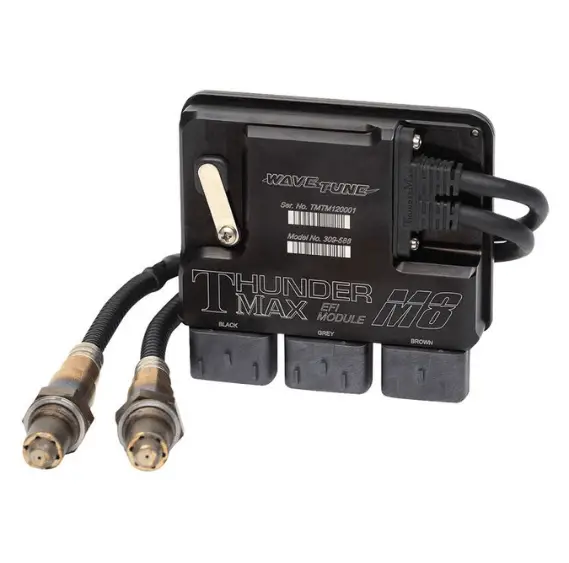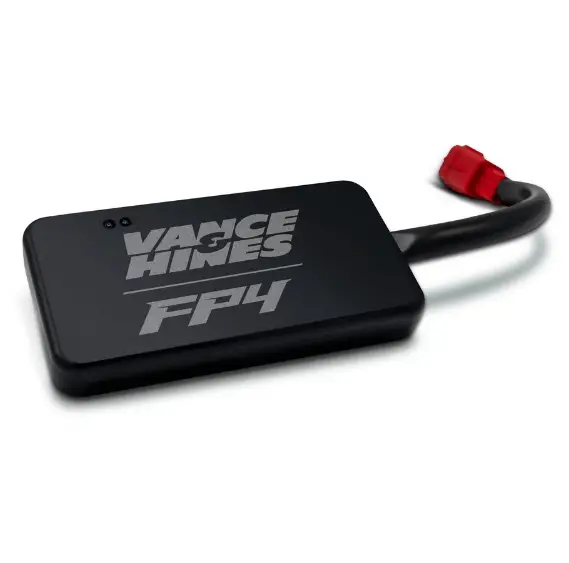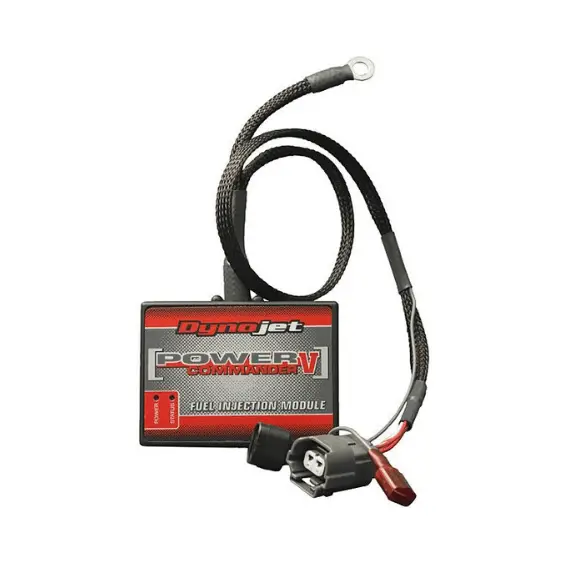Revving up your Harley’s performance and squeezing every ounce of power out of it might just be easier than you think. Enter the world of motorcycle tuners – those nifty gadgets that hook up to your bike’s Engine Control Module (ECM) to fine-tune its performance. By tweaking essential aspects like fuel injection and ignition timing, tuners can significantly boost your Harley’s throttle response, horsepower, and even fuel efficiency. Whether you’ve upgraded your exhaust system, slapped on a new air filter, or just want your bike to run lean and mean, a tuner can help you dial in the perfect settings. It’s like giving your Harley a brain transplant, one that makes it smarter, faster, and more efficient, all without the need for a wrench. So, if you’re looking to unleash the full potential of your ride, diving into the tuner scene might just be your next best move – and we’re about to do it together. Ready? Let’s go!
Related read: The Best Harley Davidson Tuner Is Revealed (+5 Alternatives)
Chase’s Pick: Best Tuner For Harley 110 Engines

ThunderMax Auto-Tuner
Key Features
- Advanced auto-tuning capability
- simple plug-and-play installation
- most advanced software diagnostics on the market
- User friendly support features
- data logging and analytics ability
Read these if you’re unsure:
– ThunderMax Tuner Reviews: A Complete, In-Depth Analysis
– ThunderMax vs Power Vision Tuner Shootout
– ThunderMax vs Power Commander: Who Packs The Punch +Value?
Understanding Motorcycle Tuners
Motorcycle tuners interface with a bike’s Engine Control Module (ECM) to optimize performance. They make precise fuel and timing adjustments that can improve throttle response, horsepower, and fuel efficiency.
Role of ECM and ECU
The ECM or Electronic Control Module, also known as the ECU (Engine Control Unit), acts as the motorcycle’s brain. It regulates the engine’s fuel mixture, ignition timing, and various other parameters. An ECM receives information from numerous sensors and uses it to control engine functions to maintain optimal performance. When a tuner is introduced, it customizes the ECM’s default settings to enhance the bike’s overall performance.
Basics of Fuel Injection Systems
Fuel-injected motorcycles sport a complex network of sensors and electronic components designed to deliver the precise amount of fuel to the engine. Unlike carbureted systems which rely on vacuum pressure, fuel injection systems use pressurized injectors. A tuner adjusts the fuel map, a set of instructions the ECM follows to determine how much fuel to inject at any given time.
Impact of Tuners on Performance
Tuners can significantly influence a motorcycle’s performance. Users may notice improvements in torque, power delivery, and fuel economy. They enable customization of the engine’s parameters for various performance upgrades, including exhaust systems and air filters. The right tuner can transform the ride quality and engine response of a Harley Davidson, making it more tailored to the rider’s preferences.
Different Types of Harley Davidson Tuners To Consider
When considering tuners for Harley Davidson motorcycles, riders generally encounter varying technologies designed to enhance bike performance. The nuances of each type of tuner can significantly impact functionality and riding experience.
Auto Tuners
Auto tuners provide real-time adjustments to the motorcycle’s engine parameters. Notably, the Vance & Hines Fuelpak FP4 stands out for its accessibility and ease of use with a Bluetooth-enabled phone application. This device is particularly adept at modifying the Air/Fuel Ratio (AFR) for models ranging from Twin Cam engines to Milwaukee Eight engines.

Vance & Hines Fuel Pak 4 Overview
Key Features
- bluetooth phone app accessibility
- real-time AFR tracking and data logging
Fuel Management Systems
Fuel management systems are integral to the overall tuning process. They regulate fuel flow and ensure optimal engine performance. The Dynojet Power Commander V is an example of such a system, meticulous in allowing users to control fuel injection mapping with precision. It’s compatible with a wide range of Harley Davidson models and is conducive to achieving a balance between fuel efficiency and power output.

Dynojet Power Commander V For Harley
Key Features
- Fits most fuel injected Harleys
- Plug and Play installation
- Advanced tuning capabilities
Flash Technology Tuners
Flash technology tuners modify the bike’s engine control unit (ECU) software. By ‘flashing’ the ECU, these tuners can affect permanent changes to engine mapping. A notable mention is the ThunderMax, which comes as a complete replacement for the stock ECU. It provides an expansive range of tuning capabilities and is designed for those who wish to have extensive control over their bike’s performance characteristics.
How To Choose The Right Tuner (For You)
When choosing a tuner for a Harley Davidson, it’s crucial to select one that not only matches the motorcycle’s model but also enhances its performance and comes with user-friendly features.
Compatibility with Harley Models
A tuner must be compatible with the specific engine and the electronic control module of the Harley Davidson. Whether it’s a Twin Cam (88ci, 96ci, or the 103) or a Milwaukee Eight engine (107ci, 114ci, or the 117), checking compatibility should always be the first step in the selection process.
Considerations for Power and Torque
The ideal tuner optimizes the air/fuel ratio, which can lead to improvements in power and torque. Adjusting these settings helps in achieving better throttle response and can contribute to a smoother riding experience.
Features and Connectivity Options
Modern tuners offer a variety of features, such as Bluetooth connectivity, allowing adjustments to be made through a smartphone app. This is available for platforms including Android, iOS, and sometimes even Windows PC. Advanced features may include real-time tracking and the ability to make on-the-fly adjustments to the air/fuel ratio and ignition timing.
General Installation and Setup Procedures To Consider
Installing a Harley Davidson tuner can enhance the motorcycle’s performance significantly. This critical process requires attention to detail to ensure the right setup and optimize the bike’s parameters for a smooth ride.
General Fuel MAP Step-by-Step Installation Guide
- Download the official mobile app for your chosen tuner, which is crucial for a proper installation.
- Connect the app to the motorcycle, typically using a Bluetooth or cable connection, depending on the model.
- Select the correct calibration file for your specific Harley Davidson model to ensure compatibility.
- Program the new calibration onto the motorcycle’s Electronic Control Unit (ECU), following app or manual instructions.
How To Optimize Tuner Parameters
- Fine-tune the air/fuel mixture according to your motorcycle’s requirements, which can be done in real time with some tuners.
- Modify the ignition timing to optimize the engine’s performance under various conditions.
- Utilize factory sensors to monitor and adjust parameters, relying on the tuner’s ability to read and interpret these inputs accurately.
Troubleshooting Common Issues
- If the tuner displays trouble codes, referencing the manual for specific codes can help identify and solve issues promptly.
- Verify all connections; loose or improper connections might prevent proper communication between the tuner and the motorcycle’s systems.
- Should the motorcycle behave erratically after tuning, reset the parameters to default and re-tune to find an appropriate setting.
Overview of Performance Tuning and Mapping
Performance tuning is critical to unlocking the full potential of a Harley Davidson motorcycle, focusing on fine-tuning engine parameters such as air/fuel ratios, ignition timing, and throttle response to maximize power and efficiency.
Adjusting Air/Fuel Ratios
Tuners must first ensure that the motorcycle’s engine receives the ideal air/fuel mixture. An optimal air/fuel ratio is crucial for engine performance and longevity. They typically aim for a 14.7:1 ratio for cruising efficiency, while richer mixtures are used for maximum power in high-load situations.
Ignition Timing and Throttle Response
Proper ignition timing is key for an engine’s power output and efficiency. Advanced timing may increase power but must be managed to avoid pre-ignition and knocking. Tuners modify the timing to improve the throttle response, which is the engine’s ability to increase speed quickly when the rider opens the throttle.
Utilizing Custom and Preloaded Maps
Motorcycle tuners often use maps, which are pre-configured settings that cater to different riding styles and conditions. These maps can be preloaded or custom-tuned. Custom maps are typically dyno-tuned for each specific bike to offer the best performance, accounting for individual modifications and riding conditions.
Monitoring and Diagnostics Capabilities
Proper monitoring and diagnostics are critical for maintaining the health and performance of a Harley Davidson motorcycle. Advanced tuners offer features for reading live sensor data, interpreting diagnostic codes, and optimizing fuel economy and efficiency.
Live Sensor Data Analysis
Modern tuners enable riders to access live sensor data, providing real-time insights into the motorcycle’s performance. This includes data from O2 sensors which are pivotal for adjusting the air-fuel mixture. By analyzing these readings, one can make informed decisions about tuning adjustments.
- Key Data Points:
- Throttle position
- Air intake temperature
- Manifold absolute pressure
- Engine RPM
Reading Diagnostic Codes
Tuners often come equipped with the ability to read and clear diagnostic codes. These codes signal when an issue arises within various systems of the motorcycle. By understanding these codes, a rider can swiftly identify and rectify problems, sometimes without the need for professional intervention.
- Common Diagnostic Codes:
- P-Series: Powertrain issues
- B-Series: Body systems problems
- C-Series: Chassis related faults
Maximizing Fuel Economy and Efficiency
A tuner’s capability to enhance fuel economy and fuel efficiency is a significant advantage. It allows for adjustments to the fuel mapping, ensuring that the engine does not run too rich or too lean. This not only conserves fuel but also improves the engine’s overall efficiency.
- Optimization Techniques:
- Fine-tuning idle RPM
- Adjusting fuel mixture at different throttle positions
- Monitoring and adjusting in response to altitude changes
Advanced Features and Capabilities To Look For
The contemporary Harley Davidson tuner market caters to technologically advanced features designed to enhance the riding experience with precision. These tuners are equipped with functionalities that optimize fuel management, allowing for real-time adjustments and improved performance.
Autotune Functionality
Modern tuners are often built with an Autotune feature, which allows for real-time adjustment of the air/fuel ratio. This means that they can self-tune, adapting to the motorcycle’s performance needs without the rider having to make manual adjustments. For instance, the ThunderMax Tuner is noted for its self-tuning capability that negates the need for dyno tuning, automatically adjusting the fuel curve for optimal performance.
Data Logging for Precision Tuning
Data logging is a critical component that serves precision tuning. It captures essential performance data over time, which can be analyzed to fine-tune the motorcycle’s fuel curve for maximum efficiency and power. Advanced tuners log operational data such as the air/fuel ratio, which can be crucial for diagnosing issues and improving long-term performance.
App-Driven Technology Integration
Integration with app-driven technology has revolutionized the way riders interact with their tuners. Tuners like the Vance & Hines Fuelpak FP4 allow for wireless connection via Bluetooth to a smartphone, facilitating on-the-go adjustments and monitoring. These apps can provide a user-friendly interface to monitor engine parameters and make changes directly from a phone, simplifying the tuning process.